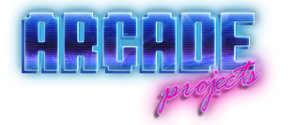Although I'm sure you've already perfected your method for calculating the position ...
Hardly, as I mentioned in post #20 my calculations in posts #14 and #15 are problematic because I was using the wrong projection system, really they need to be thrown out and redone, but the theory in post #5 I think is still the best way to go.
I don't see much discussion of the technique used in the RAYS PCB on any forums.
While this requires much easier calculations and less complex electronics, the rest of the hardware is much more difficult to make work.
You need a specialized screen surface to reflect the dot off of, something that a normal CRT or an HDTV wont have, and then you also need permanent mounting position in relation to that screen to mount the camera. This again will be difficult for most home setups and for even most generic cabinets.
I get the impression that this system also gets upset with outside light sources and reflections, which is why most of the cabs that use it are also designed in such as way as to block outside light from the screen surface.
So while the camera and LED are cheap I think getting a good screen surface and to make this system work might make it prohibitively more challenging than a gun mounted camera with LEDs around the parameter of the screen.










